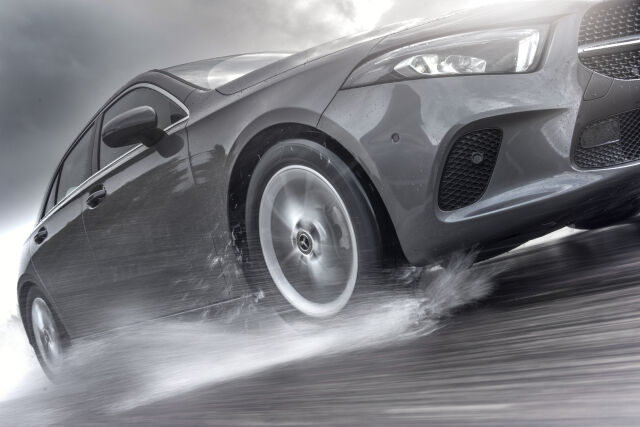
A tire blowout can cause serious risks on the road. Read how to prevent a tire blowout and what to do if your tire is damaged.
A sudden, loud boom of a tire blowout can be a heart-stopping moment on the road. Tire blowouts can cause serious risks, especially while driving at highway speeds. Therefore, you should know what to do if you experience a tire blowout and how to prevent it.
What causes a tire blowout?
A tire blowout refers to a rapid drop in tire pressure, causing the tire to burst and resulting in potential loss of vehicle control. Tire blowouts can happen for several reasons; some common causes include:
- A puncture or cut in a tire — Driving over a sharp object can cause air to escape rapidly from the tire.
- Under-inflated tires — Tires can overheat due to insufficient air pressure. This can cause the rubber to separate from the steel belt inside
- Overloaded tires — Carrying too much weight can overheat the tire and make it explode.
- Worn tires — Worn-out tires generate heat more rapidly and are more vulnerable to punctures, cuts, and other damage.
What should you do if you have a tire blowout?
If you experience a tire blowout, the most important thing is to stay calm. You should not slam on the brakes, but instead gradually slow down the speed. Steer firmly to regain control of your vehicle. You should not drive with a flat tire more than strictly necessary. Once you have managed to slow down, pull over to a safe spot and call for roadside assistance.
Some of Nokian Tyres’ products have a special Flat Run Technology (FRT) construction. It allows you to drive approximately 50–150 kilometers (30–90 miles) with a flat tire, depending on how loaded your vehicle is.
How to prevent a tire blowout
As tire blowouts can be a critical safety hazard on the road, you should ensure proper tire maintenance. Here are some tips on how to prevent a tire blowout:
- Maintain recommended tire pressure and adjust if necessary.
- Regularly check your tires’ condition. Measure the tread depth and look for uneven wear patterns.
- Do not exceed the recommended load levels or speeds.
- Pay attention to the driving environment to avoid punctures and cuts.
Even with preventive measures, unexpected situations can happen on the road. That is why keeping a safe following distance is important. Consider the weather conditions and their impact on braking distance.
Replacing a blown tire
Having a good set of tires is essential for road safety. Good tires prevent tire blowouts, enhance traction, reduce the risk of hydroplaning, and make driving safer on icy and snowy roads.
Nokian Tyres makes tires that are reinforced by puncture resistant Aramid fibers – the same material used in bulletproof vests. These tires have rugged fiber in their sidewalls to strengthen it when your car encounters road hazards, reducing the likelihood of a dangerous blowout. One tire, the Nokian Tyres One HT, even has Aramid beneath the tread for extra protection – an innovation called Aramid Shield.
In case of a blown tire or sidewall damage, it is not possible to repair the tire. When you have to replace a damaged tire with a spare tire, remember that the spare tire is designed only for temporary use. For new high-quality tires, contact your local Nokian Tyres dealer.
Please remember that it is the driver’s responsibility to ensure their tires are safe and suitable for their vehicle and to follow the vehicle’s manufacturer´s guidelines for proper use and maintenance. Consult your closest Nokian Tyres dealer or your vehicle’s manufacturer for specific advice.


